Lead generation is the number one challenge for marketers today. Millions of free resources are competing for your audience’s attention, and customers are quickly catching on to the fact that most of these “Ultimate Guides to Such-And-Such” aren’t really worth giving up their personal information for.
Jessica Meher, CEO and Co-Founder of Wonderment, put it really well on Twitter:
So many #SaaS companies today produce the same content mktg formulas as they did 10 years ago.
E.g. ebooks on “the complete guide to X” or blog posts on “5 reasons why.” etc.
This shit works, until it doesn’t. Now’s a good time to invent the new ebook. Get creative.
— Jessica Meher (@jessicameher) February 6, 2018
To generate leads, you need more than quality lead magnets and optimized lead gen landing pages. You need to think outside the box. Try something a little bit different. Maybe even a little bit… experimental.
So: How do you come up with truly great ideas for lead generation campaigns?
We talked to some of the legendary marketers working today and asked them to share their most creative lead gen examples. And believe me—these folks needed quite a bit of convincing to spill their most useful and interesting ideas.
But we got ‘em here for you: 13 ideas and examples lifted straight from the secret marketing playbooks of the pros. Use these ideas as inspiration for your next lead generation campaign. Or, just keep them handy for the next time you want to try something more interesting than creating another ebook or webinar.
Ready? Let’s get cookin’.
13 lead generation ideas to attract high-quality leads
The lead generation process can be grueling. How are you supposed to reach potential customers when everyone’s vying for their attention at every turn? Social media is crowded, search engines are even more crowded, and your competitors are spending bucketloads on ads—what can you do?
Unfortunately, there’s no one-size-fits-all, “just do this” answer. Building a solid lead generation strategy is all about testing and refining over time. Consider the lead generation ideas and examples here options to experiment with. They won’t all work for you—but could provide that spark of inspiration that helps you delight your sales team with mountains of qualified leads.
If you want to skip ahead, you skip ahead to any lead generation idea that stands out:
- Create an interactive tool that generates qualified leads
- Embed lead capture forms directly in video content
- Interview a third-party expert (and embed gated resources)
- Send attention-grabbing direct mail that delights
- Share a customer experience that builds connection
- Generate word-of-mouth leads in online communities
- Promote a personalized template that solves a problem
- Access new audiences with cross-promotion campaigns
- Experiment with new types of content (and act on what works)
- Entertain your audience with a surprising quiz
- Connect with your audience on social media>
- Create content that educates and ranks in search engines
- Create lead magnets people actually want
1. Create an interactive tool that generates qualified leads
There’s a good reason why so many brands—including HubSpot, Moz, and, yes, even Unbounce—have invested time and effort to create free tools. Tool-based marketing is popular because even simple interactive ideas can fuel campaigns that generate boatloads of qualified leads.
For example, Larry Kim, CEO of MobileMonkey, says they developed a Free Keyword Tool for the Wordstream website. Marketers could use it to research and prioritize new keywords in just a few minutes.
And while developing an interactive lead magnet might seem like a lot of work (you probably need someone who knows how to code), Larry says they were able to generate a huge number of leads as a result.
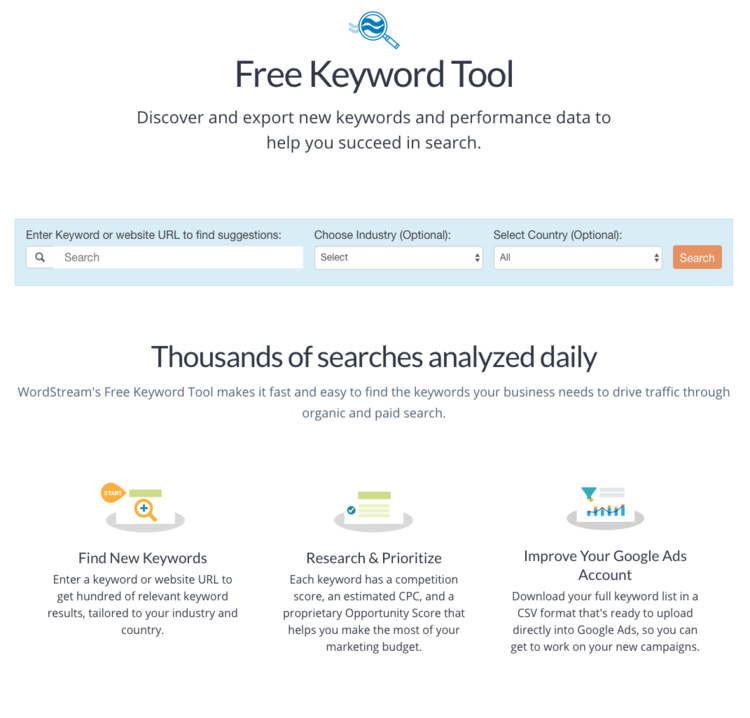
Here’s how the tool works. You start out by entering a keyword or website URL that you’re interested in analyzing. To hone the results, you can also choose the industry and country you want to focus on.
What makes this tool particularly clever is the way it displays the results. Hit the “Search” button, and you’ll instantly be able to see some of the related keywords. But all the other information? It’s hidden, blurred out, or obscured in some way.
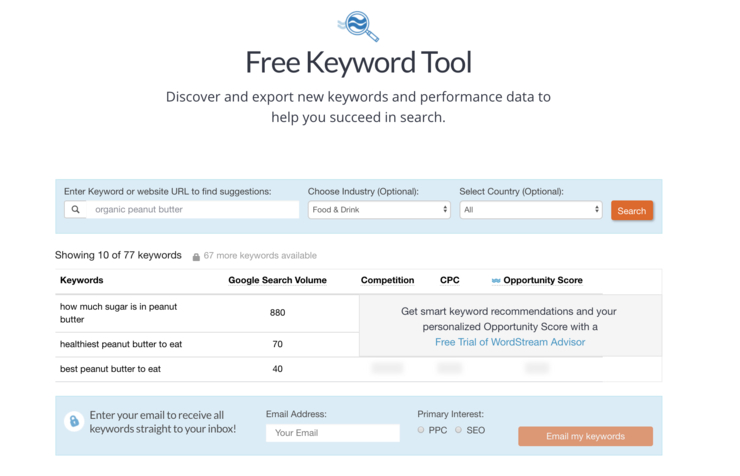
This smartly creates a curiosity gap for visitors, who feel like they’ve already started the process of doing research on their keyword. All they need to do is take one teeny-tiny extra step to get their results.
That final step? You gotta give up your email address. Boom, lead generated. And as Larry reports, it’s become a near-bottomless source of new leads:
This simple tool took just 3 months to build, yet has generated over a million email signups.
But remember: Even a simple tool can be expensive to create. When considering your tool-based marketing idea, make sure it’s something your target audience will find value in—before you start building.
2. Embed lead capture forms directly in video content
Should you be gating your best content?
I believe it was ol’ Billy Shakespeare who once wrote: “To gate or not to gate? That is the question. Whether ’tis nobler in the mind to suffer the slings and arrows of outrageous website traffic, or ask for an email address against a sea of troubles…”
At some point, every marketer faces this dilemma. You have an amazing piece of content—now are you going to give it away for free as a way to attract organic traffic? Or do you gate the content and use it as a lead gen magnet?
Cara Hogan, then Content Strategist for Zaius (acquired by Optimizely), considered these options and asked—why not both?
For their Marketing Unboxed video series, Cara says they took a hybrid approach to gating their content. Rather than lock everything behind a form, they embedded forms into each video—and it’s a great example of creative lead generation.
We created the Marketing Unboxed video series as a top-of-funnel piece of content designed to engage our target audience of B2C and commerce marketers. By including a lead gen form within the video itself, we encourage people to subscribe, but we don’t require it.
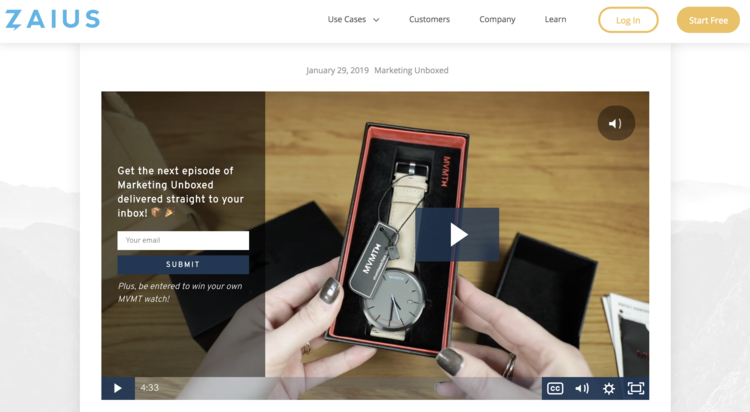
The forms draw just the right amount of your attention, without being too distracting. It slides off the video if you move your mouse off the screen, but then pops back on whenever you come back. All in all, it’s a very tasteful lead-generating campaign that Cara says has driven some serious results.
We’ve generated hundreds of net new leads from this video series so far. We’ve only published 10 total episodes, and older episodes continue to earn subscribers over time. Some of these subscribers have since been nurtured to become new Zaius customers.
3. Interview a third-party expert (and embed gated resources)
For many brands, consistent blogging is a key source of lead generation. Every time you put out an article, it’s an opportunity for someone new to visit your site, discover your product or services, and opt in for more communications.
But you don’t need to create all of that content on your own. Interviewing experts in your field (kinda like we did for this article) and sharing their advice or perspective can be a fantastic way to bring in new audiences.
Take, for example, this lead gen example brought to us by Aaron Orendorff, previously the Editor in Chief of Shopify Plus. To help Shopify rank for some valuable keywords—such as “ecommerce replatforming”— Aaron interviewed a high-profile expert in the industry.
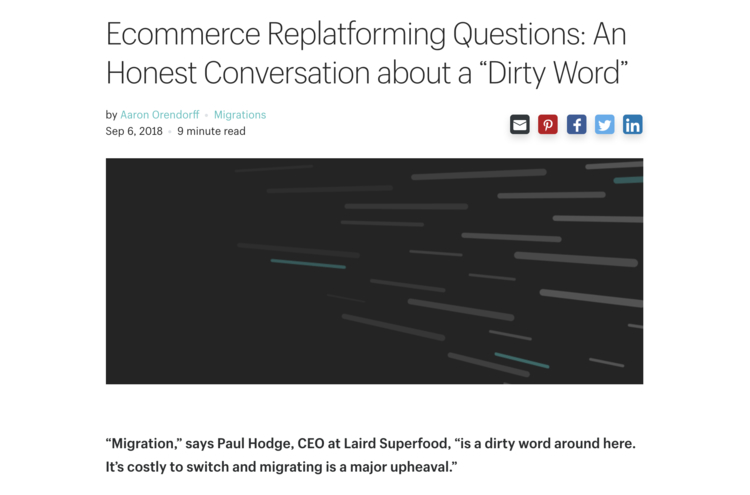
Aaron says it’s the quality of the interview that makes this lead gen example work.
Rather than a heavy-handed sales pitch, the piece is an interview with Paul Rogers—one of the brightest and most respected leaders in ecommerce … That objectivity—and framing the article as an honest conversation about a ‘dirty word’—is highlighted throughout.
But wait—how do you actually generate leads with an interview or blog post? Aaron explained that they peppered the article with three separate lead gen CTAs (including an Unbounce popup) to present visitors with downloadable content related to the topic of the interview.
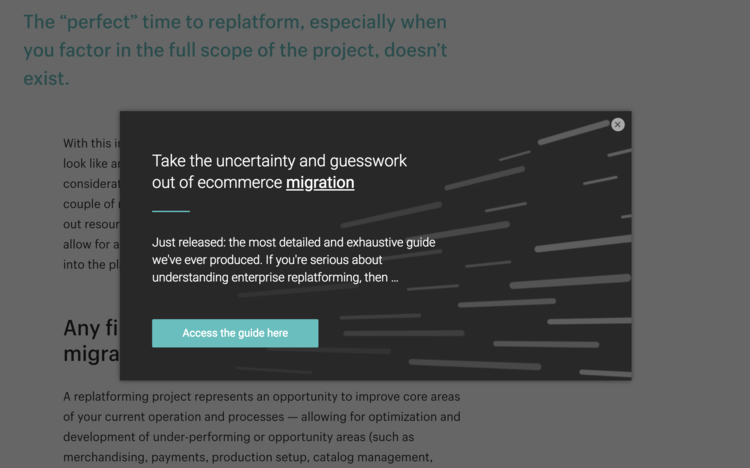
It goes to show: Any piece of content can become a lead magnet, so long as you’re offering real value to your audience.
4. Send attention-grabbing direct mail that delights
Direct mail might seem like an old-school marketing tactic—but that’s exactly what makes it so darned interesting for lead generation. Why not focus your efforts on a smaller customer segment, and put together packages that really get them to sit up and take notice?
For example, check out these direct mailers that Hero Conf sent out to promote their PPC marketing conference. The event organizers used a super creative approach to get the attention of marketers like Casie Gillette, SVP of Digital Marketing at KoMarketing:
Oh man. @heroconf this is one of the coolest pieces of direct mail I’ve ever received! Who knew video could be so amazing in such a small package? 👏 pic.twitter.com/aQnlV2y71G
— Casie Gillette (@Casieg) January 31, 2019
Each piece of mail embedded a small video screen to show clips of the presenters who would be speaking at Hero Conf. And while these must have cost a fair bit more than a typical event brochure, Casie says the unique packaging really helped to win her over.
What got me was if you played the video to the end, they had a free ticket offer—you just had to respond to the email they had sent earlier … By placing the offer at the end, only those who watched the video all the way through would learn about the offer. A really cool way to grab attention.
Sure, this isn’t exactly a lead generation example, but the same principles apply. When you connect with your audience in delightful and unexpected ways, they notice—and they’re more likely to engage with you, too.
5. Share a customer experience that builds connection
Creating a connection with your audience is crucial to effective lead generation. Folks need to trust you before they’re gonna hand over their contact information. And one of the best ways to build trust is with social proof, like customer testimonials and positive reviews.
Andrew Davis, best-selling author and keynote speaker, has pointed out that most video testimonials are pretty dry. They’re usually just a lot of talking heads, with nervous customers babbling on about all the reasons why they like some marketing brand. They don’t feel authentic.
But there’s also a different type of video testimonial—one that actually tells the complete customer story. And although these can be harder to produce, they can also serve up a different type of indirect lead generation for your business.
As an example, Andrew suggests watching this video on YouTube that recently went viral: Vance’s Incredible 365-day Transformation. The video now has over 100 million views and 120,000 comments on YouTube.
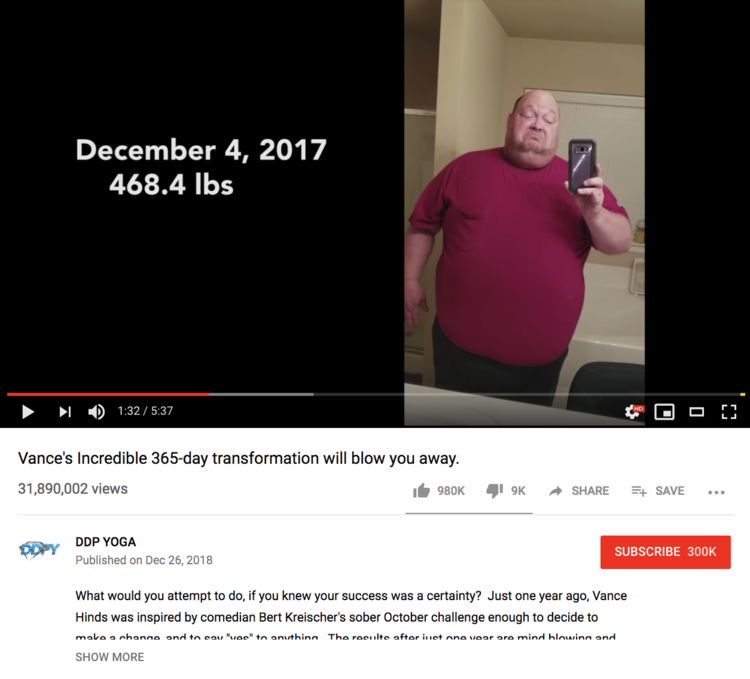
Unlike other video testimonials, this customer story is shot in real-time. It’s compelling, it’s emotional—and it doesn’t have a single call to action.
Instead, Vance mentions throughout the video the diet and exercise program he is using to lose weight. The references start out subtle, but eventually become a main focus of the video. Andrew calls this an “implied CTA” that generates leads by inspiring viewers to take the next step.
A great testimonial video needs no call to action. It actually should create a moment that inspires people to do the next search … It doesn’t need a button, it just invites people who are so inspired to actually check out the next step of the product.
If you want to try this for yourself, all you need to do is start thinking about how you can frame your customer stories more like, well, stories. Connect with viewers on a personal or emotional level, and tease out the results so they get curious to learn more. Then, when it comes time to ask them for something (like an email address), they’re far more likely to say yes.
6. Generate word-of-mouth leads in online communities
For freelancers, consultants, and smaller marketing agencies, you might have to take a slightly different approach to lead generation. While you can still build lists using lead magnets on your website and landing pages, a lot of your success will also come from word of mouth and social interactions.
For example, Nichole Elizabeth DeMeré, B2B SaaS Consultant, says their go-to lead generation strategy has been to build sincere connections with other people in both online and offline marketing communities.
Being an active member of my favorite communities has led me to receive leads from other members, because I’m demonstrating expertise in that domain.
Nichole says that being an active community member on websites like Growth Hackers has often led to them becoming a part of the team, responsible for either community management or growth.
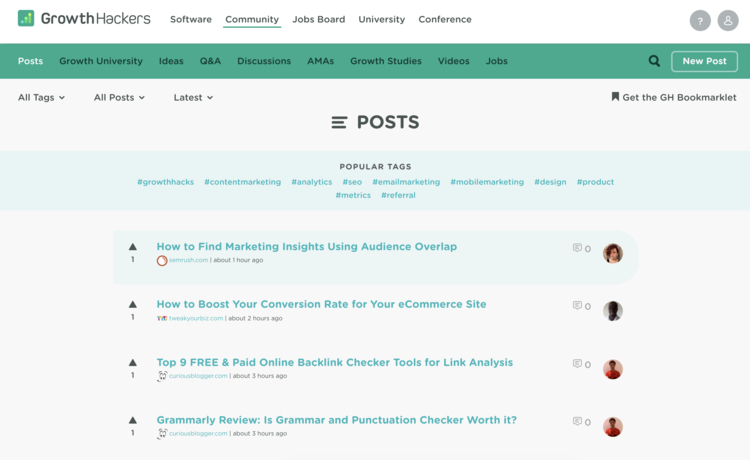
This is a mindset shift from traditional lead generation campaigns. As you build relationships and demonstrate expertise, people will naturally start to think of you or your company for future opportunities. The key is to be genuinely helpful and selfless in your interactions, and to try to build actual friendships with other members of the community.
The thing is, ‘getting leads’ was never my end goal for any of these communities. I was just actively building relationships by bringing value to others.
7. Promote a personalized template that solves a problem
The right template on the right page can be a powerful tool for generating leads. That’s because visitors are willing to give up their personal information in exchange for something practical they can actually use.
But while traditional templates are usually just generic PDF downloads, Ross Simmonds, digital marketing strategist, says you can get better results by making a downloadable template that’s more personalized and interactive.
Almost every audience loves a template. If you can think about a simple template that arms your audience with the steps they need to take to solve a problem, it can be a great win. Even better: Make it an interactive template that gives the user the ability to download it at the end.
As an example, Ross points towards this Free Privacy Policy Generator created by Shopify.
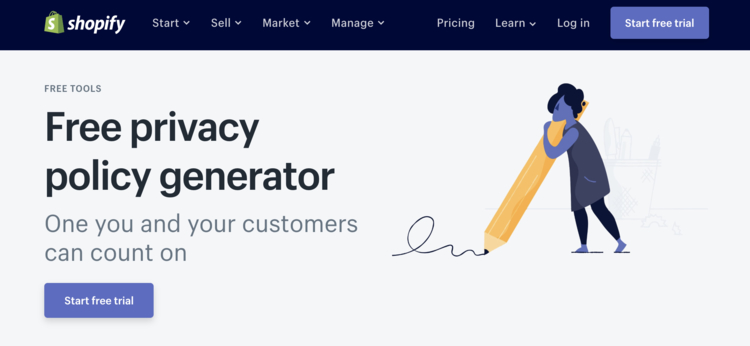
Privacy policies are one of those things that ecommerce business owners know they need, but probably don’t have time to create. And while Shopify could have given their visitors a sample policy or instructions on how to create their own, instead they decided to go above and beyond by building a personalized template generator.
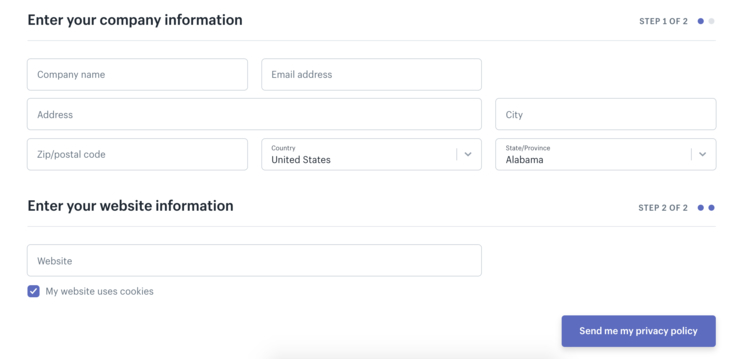
The form you fill out to generate your privacy policy serves two purposes. Not only does it help personalize the template with your company info, but it also lets Shopify follow up meaningfully with every lead that uses the tool. How cool is that?
The template approach is interesting because there’s a true value exchange. If you’re offering a template that is closely aligned with your product or service it can be both a rewarding user experience and a rewarding lead generation tactic.
When you’re coming up with your own lead generation ideas, think about value. “What problem can I solve for my audience?”
Sure, you don’t wanna give everything away to get somebody’s contact information—it’d put you outta business. But it’s important to remember that generating leads is an exchange of value with your audience. They get something, you get something. Give and take.
Just make sure they feel like they got their email’s worth.
8. Access new audiences with cross-promotion campaigns
Cross-promotion isn’t a new idea—but it’s something too few marketers think about when it comes to lead generation.
The hard part, of course, is finding the right brand to partner with. If the other company is too similar, then your audiences might already be overlapped. (See also: Competitor.) If the other company isn’t similar enough, then you run the risk of promoting to people who just don’t care about your brand or products.
This is where a bit of outside-the-box thinking can come in handy. Britney Muller (formerly Senior SEO Scientist at Moz) points to this particularly clever example of cross-promotion between Hydrate IV Bar and Live Love Lash:

Rather than partner with another health or fitness company for their cross-promotion, the marketers at Hydrate IV Bar decided to try a different strategy. They thought about different places where their target customers might be available to try an IV bar, and struck up a smart partnership based on that:
The Hydrate IV Bar team was brilliant in thinking outside the box for local lead gen! In what instances are people in a position of stillness/rest where they could also benefit from IV therapy? Lash extensions! This cross-marketing has done very well for both businesses and feels like an efficient use of time for their customers.
And the thing is, there are all sorts of unique cross-promotion opportunities available that marketers might miss. Let’s say you’re a running shoe company, for example. The obvious cross-promotion opportunity would be a sports store, right? But you could also partner with a gym or training facility, and target athletes in the places where they spend the most time. Or, heck—how about a dog training workshop for folks with energetic puppers?
The beauty of a lead generation campaign that leverages co-marketing is both companies get exposure to a whole new audience. Rather than targeting the same people over and over, you’re suddenly talking to lots who’ve never heard of you before—and that can make ’em more receptive to hearing you out.
9. Experiment with new types of content (and act on what works)
Sometimes, the best lead magnets can develop outta projects that have very little to do with your actual business. If you dig into related topics, you can discover whole segments of customers who otherwise might not have been exposed to your brand or marketing.
And when it comes to side projects, Ryan Robinson is a self-described aficionado. Once, he launched a public challenge on his blog to validate a random business idea in under 30 days with only $500.
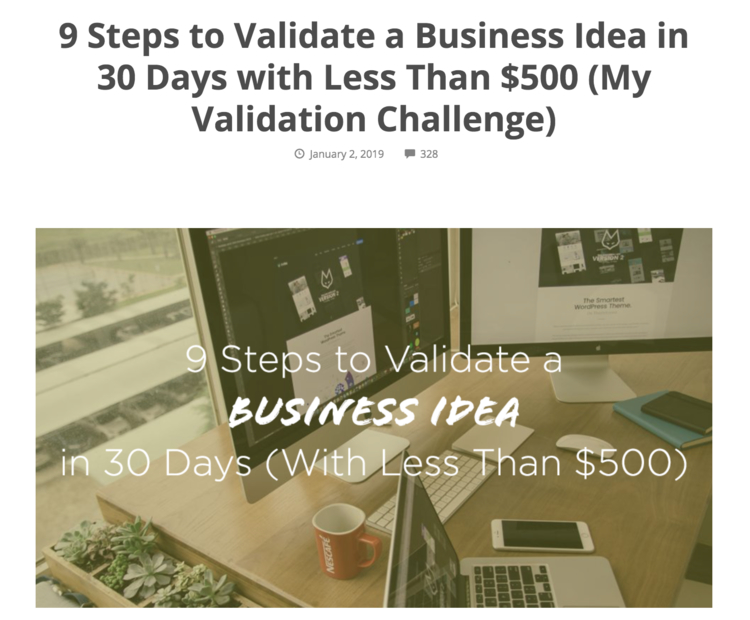
The project took up a lot of Ryan’s time for that month, even though it was something he was doing on the side. He figured it would just be an interesting way to educate readers on how to validate their business ideas, and perhaps bring in some new audiences to his blog. But he was surprised by the number of leads he was able to generate as a result.
I saw a sizable surge in traffic during my first week of the challenge. Throughout the course of the full month as I updated the challenge post, I picked up almost 3,000 new subscribers on my blog.
To take advantage of all these new leads, Ryan even built a new course based around his learning.
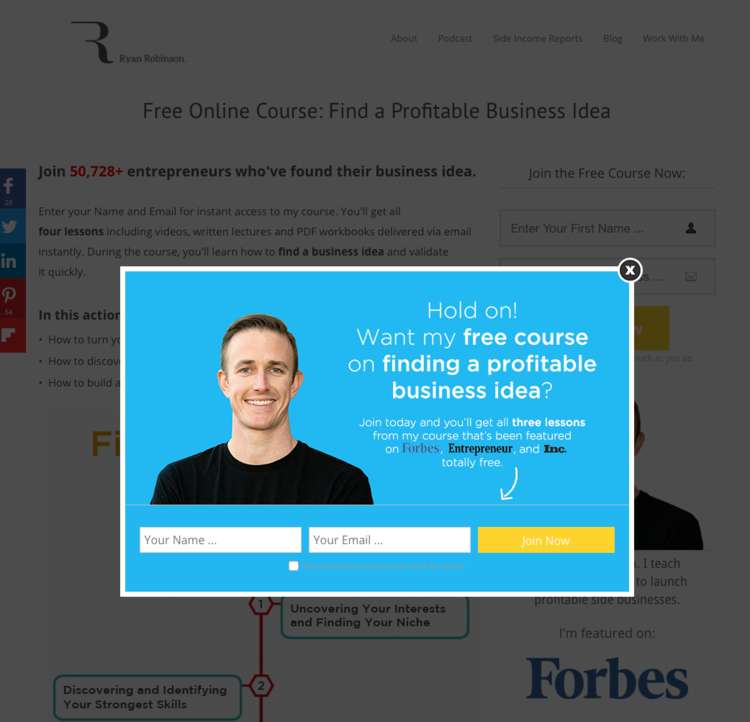
A couple months after the challenge wrapped up, I launched a course about validating ideas to that new audience … This new group of subscribers that tuned in and kept a close eye on my challenge were very qualified leads, and that course ended up generating over $15,000 in revenue during just the first week of open enrollment.
What do they say? “No bad ideas in a brainstorm?” Try approaching lead gen campaigns with a similar philosophy. Experiment. Create new types of content, content on new topics, new content formats. You never know which one is gonna catch fire—and when it does, be sure you’re ready to collect the… smoke.
(That’s a bad analogy. Leads. Collect the leads, is what we mean.)
10. Entertain your audience with a surprising quiz
Online quizzes have been around for years, but many marketers still haven’t discovered their potential for lead generation. They’re powerful because they’re so compelling—visitors actually have fun filling them out, and then get super curious about the results. (“Why yes, I do want to know which piece of IKEA furniture best represents my personality… LACK? This is bullshit.”)
To find a creative quiz example, we went to the quizmaster herself, Chanti Zak. Chanti is a quiz funnel strategist and copywriter who specializes in creating quizzes for lead gen, and really brings a special flair to the quiz creation process.
As an example, she shared this saucy quiz she created to target entrepreneurs for Jenna Kutcher’s website.
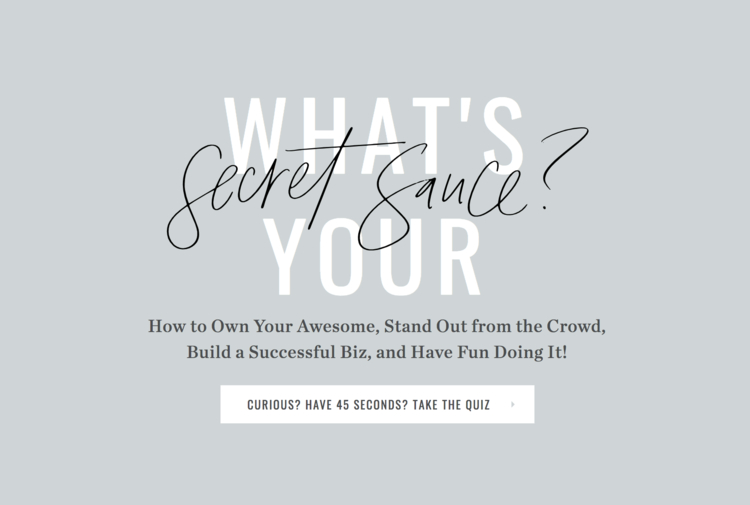
The key to a great quiz? You’ve got to surprise and delight visitors with every click, so they stay engaged throughout the process. Throw them a couple curveballs along the way, and then hit ‘em with results that speak to their unique situation.
The results go deep into what uniquely positions you to create a successful business. The custom results meet people where they’re at and are intentionally designed to empower them to take action.
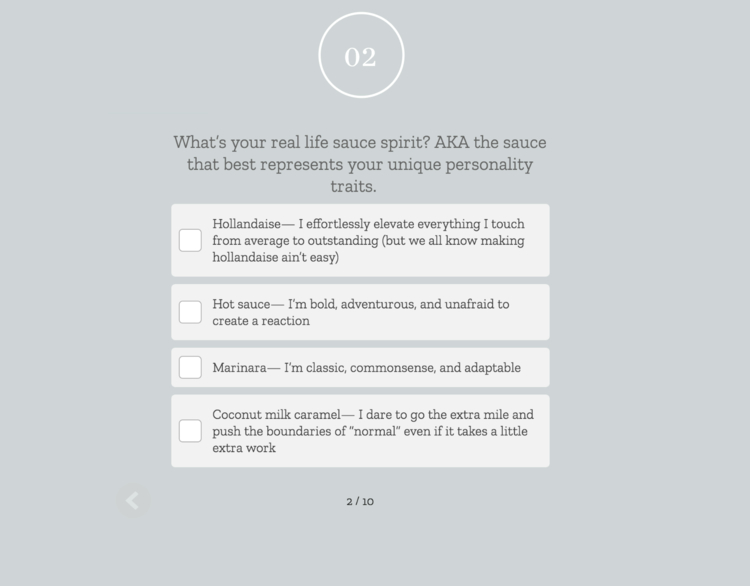
To attract the most leads, you’ll want to create a quiz that speaks directly to your brand and target market. For this example, Chanti created playful questions and answers that really get in the headspace of a budding entrepreneur.
When this interactive and personalized approach is the first impression someone has of your brand, your chances of converting them from onlooker to customer are exponentially higher than with a generic lead magnet.
And the strategy seems to have worked too, with this quiz alone generating over 100,000 leads.
In thinking through your own lead generation ideas, don’t forget that entertainment is valuable, too. People don’t wanna be lectured. (Oh jeez, are we lecturing?) Think about ways you can make your lead magnet delightful and engaging. Life’s too serious as it is—inject a little fun into your marketing campaigns, wouldya?
11. Connect with your audience on social media
Social media remains one of the best ways to reach potential customers and build real connections.
Start with the personal touch. Share content from real people at your company – yourself, your leaders, your team. People connect with people, not logos. Share what’s happening behind the scenes, drop some knowledge bombs, or celebrate wins. It builds trust way faster than corporate-speak.
The real magic happens when you mix organic content with smart ad spending. New to the game? Start with ads targeting cold audiences (folks who don’t know you yet). Keep it simple – show them why your product matters in their life. Once they’ve checked you out, hit them with retargeting ads that nudge them closer to buying.
Ready to level up your social media advertising game? Try this:
- Target people who visited your site but didn’t buy—they’re already interested.
- Create different ads based on where people are in your funnel.
- Stop showing ads to people who’ve already converted (save that money!)
Mix personal content with targeted ads, and watch social media become your best source of quality leads.
12. Create content that educates and ranks in search engines
The best content marketing doesn’t just chase “SEO” traffic—it solves real problems. Start with searches that show buying intent:
- Branded searches: People looking specifically for your company.
- Comparison searches: Prospects comparing you to competitors.
- Alternative searches: “Alternatives to [competitor].”
- Category research searches: Broader searches like “best [category] software.”
Once you’ve nailed those money topics, branch out. Think about what your audience is trying to accomplish. Write blog posts packed with examples and templates they can use right now.
Remember: humans first, search engines second. A boring, robotic post won’t help anyone. Write like you’re explaining things to a friend. Answer questions directly, give actual steps people can follow, and keep it interesting. Good content naturally ranks well and brings in the right traffic.
13. Create lead magnets people actually want
Great lead magnets solve real problems right now. Focus on these proven formats:
- Quick-win checklists that tackle one specific challenge
- Ready-to-use templates (think email scripts or project plans)
- Interactive calculators that give instant answers
- Fun quizzes that teach while they engage
- Step-by-step playbooks for tricky problems
The secret to effective lead magnets? They need to solve a real problem.
Think about the challenges your audience faces right now—especially ones your product helps solve. If you’re selling project management software, maybe offer a team planning template or a “productivity power-ups” checklist.
Make it immediately useful. When people get real value upfront, they’re more likely to trust you with their email—and eventually, their business.
Ready to launch more creative lead generation campaigns?
Of course, we’re only scratching the surface with these ideas. There are all sorts of different ways to generate leads, including more tried and true methods. You could host a webinar, offer a free ebook download, run a contest, or buy ads on social media. The opportunities are almost endless.
Whatever you try, the most important thing to remember is this: In order to generate qualified leads, you need to offer up valuable content. Give those top-of-funnel leads something that’ll educate, entertain, inform, or inspire. And for the best results, be sure to pair your lead magnet with an optimized landing page that drives your visitors to take action.




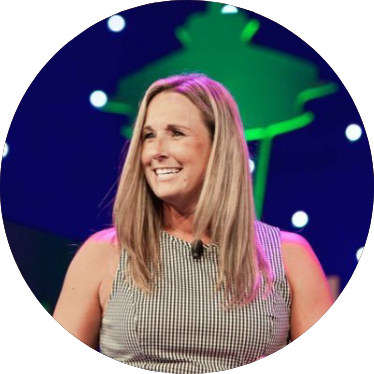

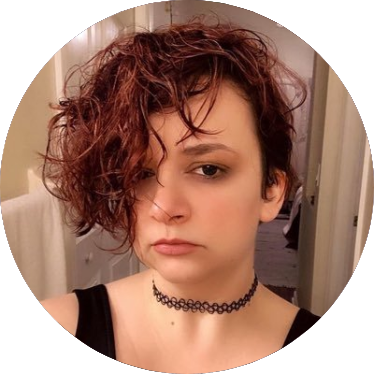




![[Build – MOFU] Landing Page Templates – V1 – 2024 landing page templates](https://unbounce.com/photos/blog-visual-cta-2x-v2.jpg)
